Looking for Answers from the Gods About the Pandemic
As I sit and work day-to-day, I remember when I first heard about COVID-19 pandemic, Tyr told me that my job was now to stay safe and alive. So far, I’ve managed to do so. But it got me thinking about others who do not hear the gods, and I’d imagine they wonder the gods have to say when it comes to this already brutal year.
We Now Continue Our Year From Hell…
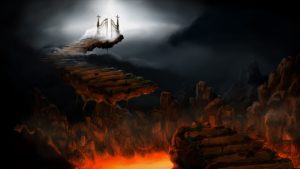 I intentionally used the Christian Hell, because I doubt strongly Lady Hel would treat humans this badly. 2021 is shaping up to be as awful as 2020 in a lot of respects. Sure it’s a new year, and we have the vaccine, but it’s going to take a shitload of inoculations before we can truly think this pandemic nightmare is finally over. Assuming the vaccine does what it’s supposed to do.
I intentionally used the Christian Hell, because I doubt strongly Lady Hel would treat humans this badly. 2021 is shaping up to be as awful as 2020 in a lot of respects. Sure it’s a new year, and we have the vaccine, but it’s going to take a shitload of inoculations before we can truly think this pandemic nightmare is finally over. Assuming the vaccine does what it’s supposed to do.
Our ancestors dealt with diseases all the time, and unfortunately they did not live long. You had a one in three chance of dying before you turned 21. If you were a woman back then, the chance of dying in childbirth was huge. Most people didn’t make it to 50. True. If you did, you were very old. It took courage and strength to survive in the Viking Era. Despite all the hardship, people did live their lives and lived as Heathens.
What the Gods Might Say to Us About the Pandemic
 When it suits the gods, I sometimes hear from them. Despite my connection to them, I try very hard not to put words in their mouths. Different gods have different agendas. Even so, I do get impressions and feeling from them. And the message I get is to survive. Yes. Survive. You, me, …everyone. Use our brains to understand what is happening and listen to those who know more about it than we do. That means, listen to medical and health professionals who have more knowledge than your neighbor, your favorite politician, or your favorite conspiracy website. Even I don’t have the answers to everything, but I will tell you how I see it. Too many people are quick to go back to “normal” living when most of the population isn’t vaccinated, and we really don’t know how long the vaccine is effective.
When it suits the gods, I sometimes hear from them. Despite my connection to them, I try very hard not to put words in their mouths. Different gods have different agendas. Even so, I do get impressions and feeling from them. And the message I get is to survive. Yes. Survive. You, me, …everyone. Use our brains to understand what is happening and listen to those who know more about it than we do. That means, listen to medical and health professionals who have more knowledge than your neighbor, your favorite politician, or your favorite conspiracy website. Even I don’t have the answers to everything, but I will tell you how I see it. Too many people are quick to go back to “normal” living when most of the population isn’t vaccinated, and we really don’t know how long the vaccine is effective.
As Heathens, we need to understand that the gods are not our bitches. They don’t run to us when we call. They don’t coddle us. They expect us to behave like the adults we are and face our problems head on. That may mean to show enough courage to wear a mask to protect the more susceptible people. To give up our parties and socializing for a while. And even to act like an adult when others aren’t.
Not Our First Pandemic: Our Ancestors had it Rough
 I get it. It’s been a tough year sheltering in place. But guys, we have it easy comparatively speaking, to our ancestors. Our medical professionals tell us to wear masks, stay at home when not doing anything that is vitally essential, and social distance when we’re in places with other people. Yeah, the virus has screwed with our jobs and our livelihoods; I get that. Kids can’t socialize and play with others. Yeah, I get that too. Suddenly parents have had to become parents again and deal with their family on the full-time basis. Not always easy.
I get it. It’s been a tough year sheltering in place. But guys, we have it easy comparatively speaking, to our ancestors. Our medical professionals tell us to wear masks, stay at home when not doing anything that is vitally essential, and social distance when we’re in places with other people. Yeah, the virus has screwed with our jobs and our livelihoods; I get that. Kids can’t socialize and play with others. Yeah, I get that too. Suddenly parents have had to become parents again and deal with their family on the full-time basis. Not always easy.
I look at how our ancestors had to cope with disease and hardship, and look at us today. Despite almost a half million dead in the United States alone—and yeah, I do know people who have had this terrible disease, or who work with patients who have it—we humans are better prepared than we have ever been to combat this disease. And what’s more, simple measures such as wearing a mask, handwashing, and maintaining a distance from others who are not in your immediate household can help prevent you from getting the virus and spreading it to others. When compared to what our ancestors had to deal with, our sacrifices for not spreading the disease seem minor.
Humanity hasn’t Changed, Much to My Chagrin
 All that being said, I’ve been horrified that our behavior as a species hasn’t changed since the last pandemic. And how we haven’t changed that much since diseases such as the plague have ravaged our populations. Different accounts have shown that people’s behavior is still pretty much the same in a crisis. Despite all the progress in science we’ve made, people are still quick to trust in their god or gods that they will be spared despite our knowledge and education. Or they go about blaming conspiracies by certain mistrusted groups. Or they make shit up and try that to protect themselves.
All that being said, I’ve been horrified that our behavior as a species hasn’t changed since the last pandemic. And how we haven’t changed that much since diseases such as the plague have ravaged our populations. Different accounts have shown that people’s behavior is still pretty much the same in a crisis. Despite all the progress in science we’ve made, people are still quick to trust in their god or gods that they will be spared despite our knowledge and education. Or they go about blaming conspiracies by certain mistrusted groups. Or they make shit up and try that to protect themselves.
In short, most people have never learned critical thinking. And honestly, that will be the downfall of humanity. Our own stupidity and ignorance will kill us faster than anything else because most are unwilling to understand the logic behind health professionals’ recommendations. You know, the guys with the fifty-pound heads who study diseases for a living? Who make recommendations from the current data they have? No, they’re not infallible. And no, they may change their recommendations as new data comes to light, but honestly, would you rather trust your neighbor who believes in chemtrails, or a seasoned medical professional with enough training and degrees, who has studied this disease, and has the latest information?
The Gods are Not Your Bitches
Look, if you’re looking for Odin, Thor, or whomever to keep yourself and your family safe from this pandemic, I’ve got news for you. The gods are not your bitches. They don’t come when we call them like some well-trained dog looking for a biscuit. Look, I’m on good relations with about a half-dozen gods and goddesses, and they don’t pop in most of the time when I talk to them. Sure, they listen. But whether they decide to talk with me is their decision; not mine. I get that.
Asking a god or goddess to protect you from COVID-19 while you’re still going to bars, not wearing masks, and not social distancing is insulting to our gods. They expect for us to use our brains and show foresight. They expect us to take the measures we can to protect ourselves from a pandemic. To expect them to keep you safe is ludicrous.
So, yeah, trust in the gods, but prepare yourselves. And don’t treat our gods like the Christians treat theirs.
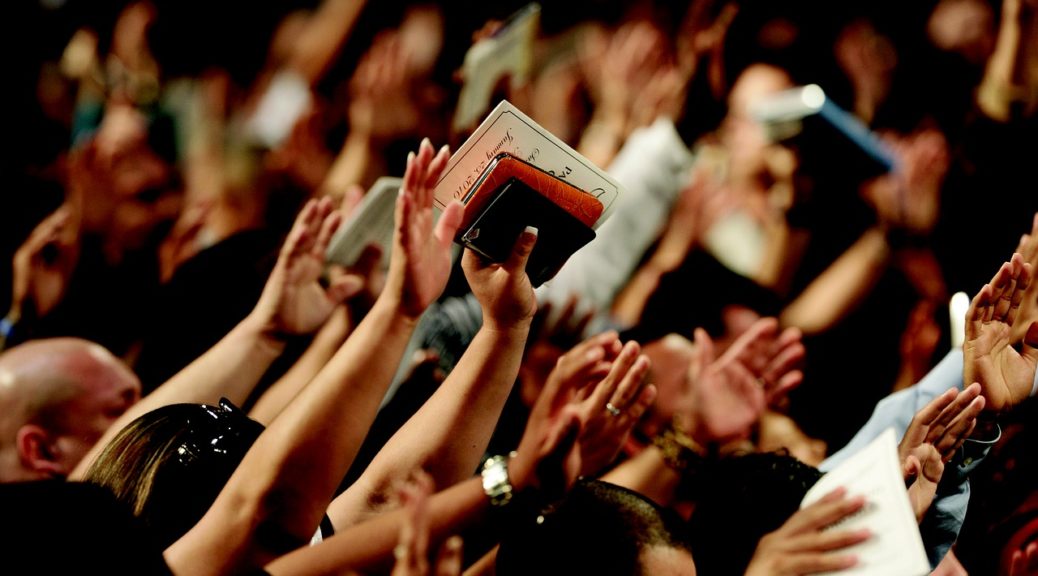
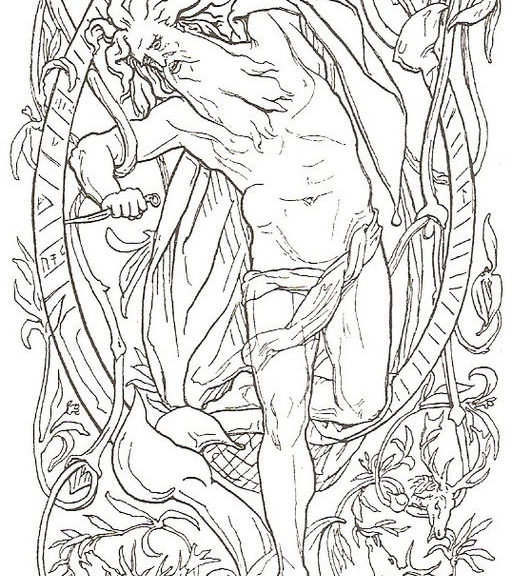


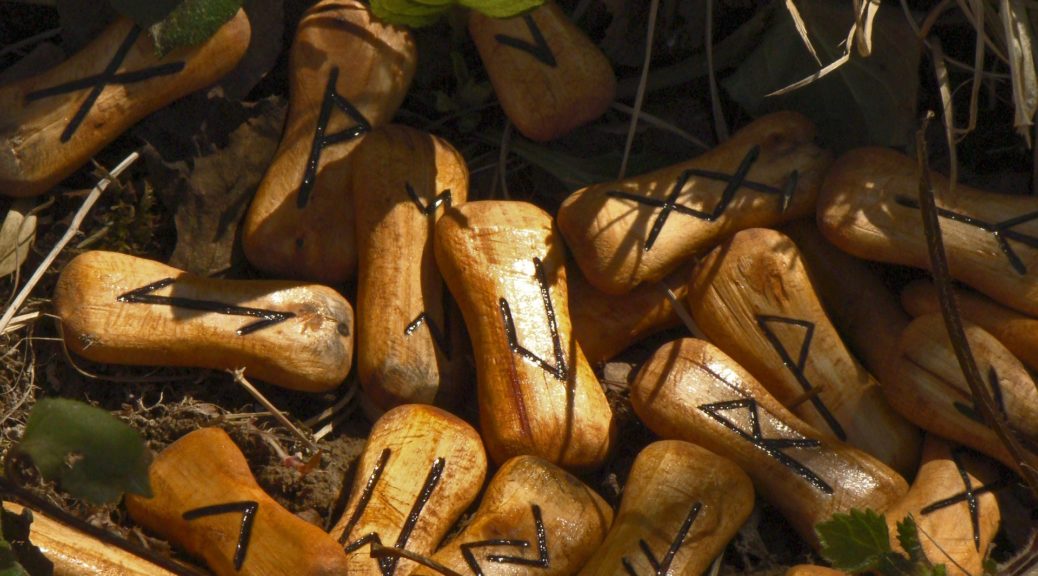
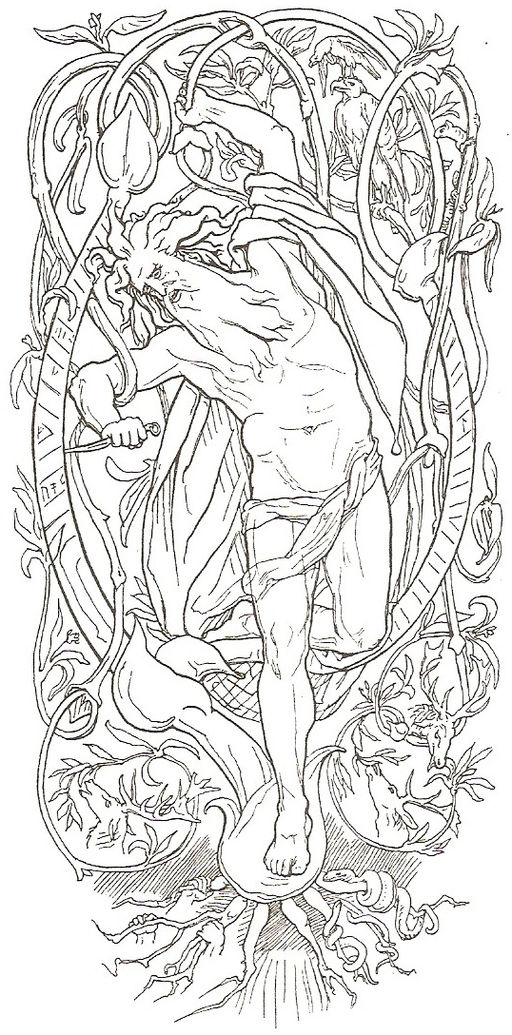

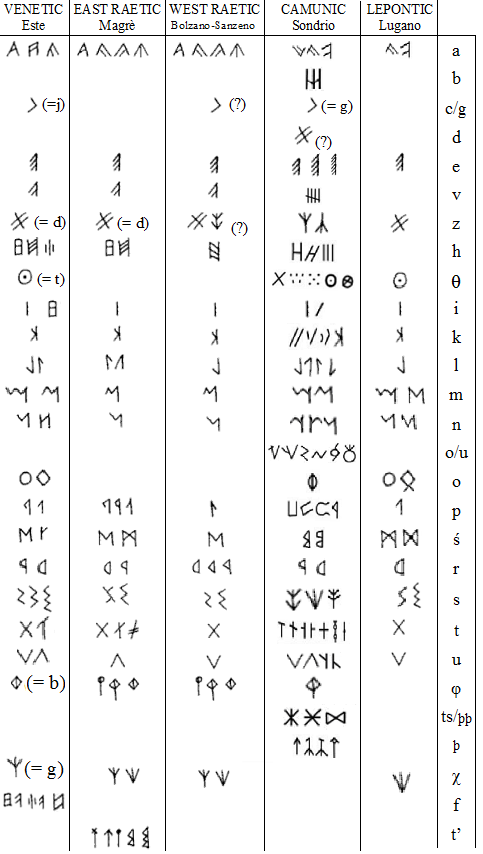 If we look at the runic alphabet from archaeology, we can get a sense for where the runes came from. Even so, it’s sort of a mystery how the runes came into being. We know that the oldest runes, the Elder Futhark, were written as early as 150 AD or CE (Common Era). But whence they came is as interesting as the story in the Havamal. Runes may have be derived from what are called the Old Italic Alphabets, which includes the
If we look at the runic alphabet from archaeology, we can get a sense for where the runes came from. Even so, it’s sort of a mystery how the runes came into being. We know that the oldest runes, the Elder Futhark, were written as early as 150 AD or CE (Common Era). But whence they came is as interesting as the story in the Havamal. Runes may have be derived from what are called the Old Italic Alphabets, which includes the 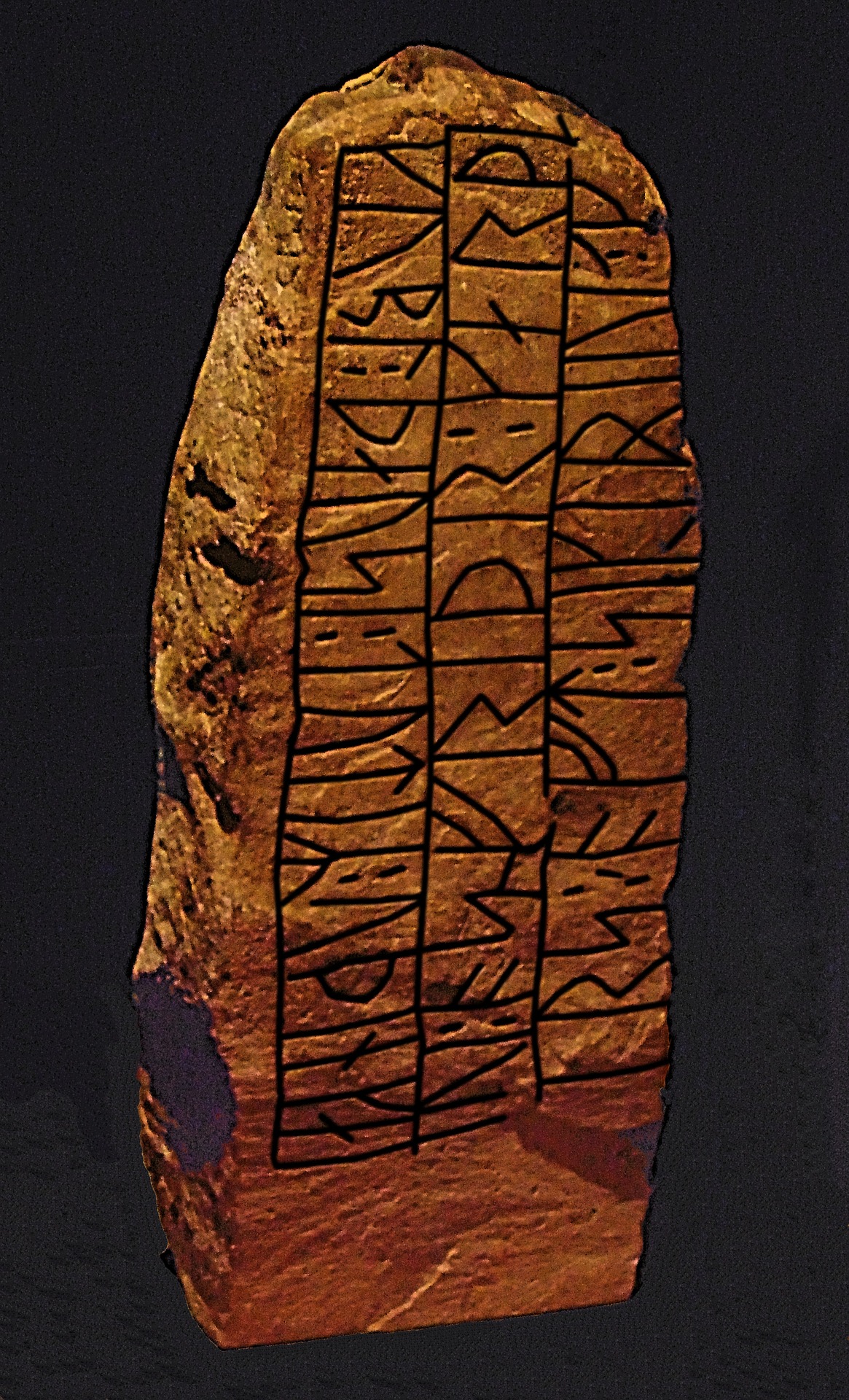 Our ancestors ascribed magical powers to the runes, and it’s not hard to guess why. If you’ve never had a way to keep knowledge available for generations to come other than oral tradition (which had problems with changes over time, and lost information due to untimely deaths), it would seem like magic. Think how magical it would be to have a way for your ancestors to speak to you. Those who could write the runes must have appeared to be very powerful shamans to less learned folk. And those who could read the runes were certainly powerful in knowledge.
Our ancestors ascribed magical powers to the runes, and it’s not hard to guess why. If you’ve never had a way to keep knowledge available for generations to come other than oral tradition (which had problems with changes over time, and lost information due to untimely deaths), it would seem like magic. Think how magical it would be to have a way for your ancestors to speak to you. Those who could write the runes must have appeared to be very powerful shamans to less learned folk. And those who could read the runes were certainly powerful in knowledge.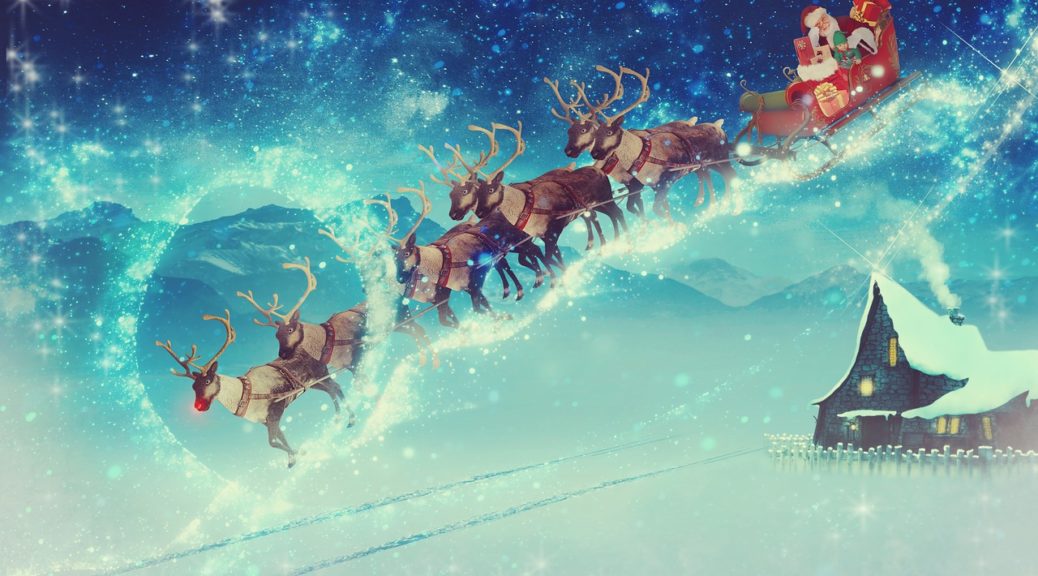

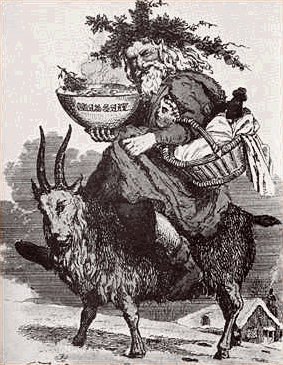
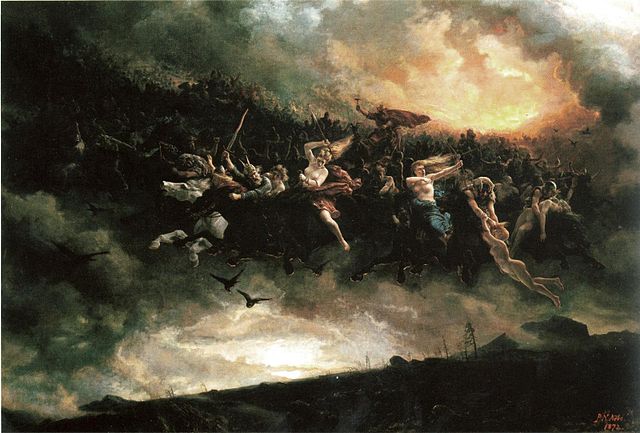

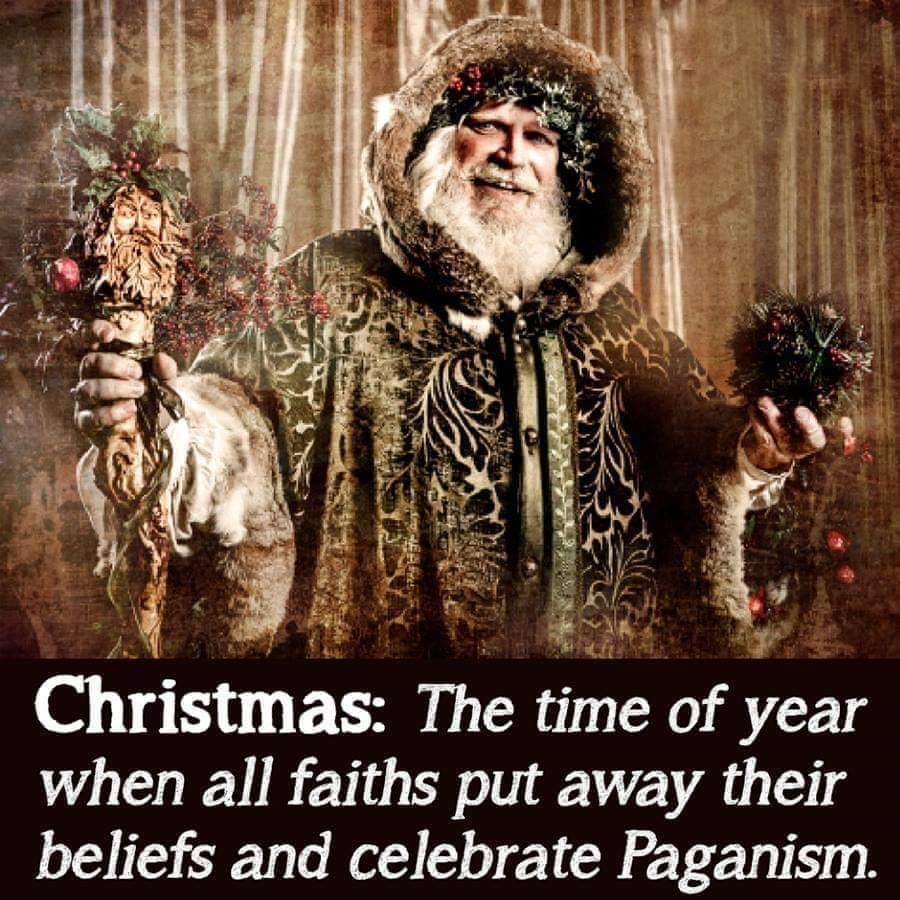
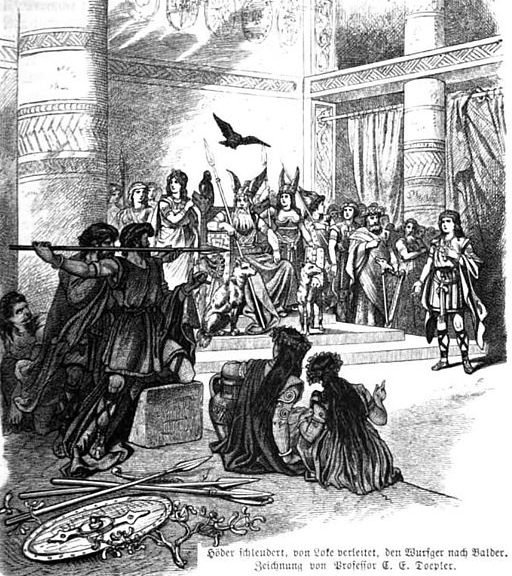
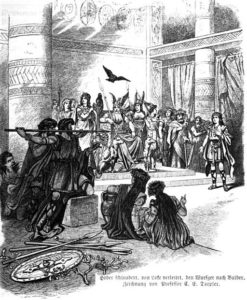 One of the most iconic stories in Norse mythology is the death of Baldr. It is probably the best known among Heathens and often recited by the anti-Lokeans as a way to justify why the Rokkatru are wrong to even consider venerating Loki and his ilk. While I’m not Rokkatru (although I suppose someone can point to me being a follower of Skadi as being a Rokkatru), I do have a deeper analysis of why the story of Baldr’s death is more than face value.
One of the most iconic stories in Norse mythology is the death of Baldr. It is probably the best known among Heathens and often recited by the anti-Lokeans as a way to justify why the Rokkatru are wrong to even consider venerating Loki and his ilk. While I’m not Rokkatru (although I suppose someone can point to me being a follower of Skadi as being a Rokkatru), I do have a deeper analysis of why the story of Baldr’s death is more than face value.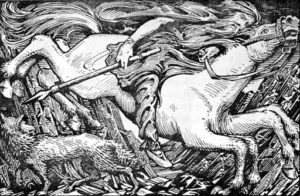 Baldr had nightmares of his death. Odin therefore went to Niflheim to consult a dead seeress to find out what was the cause of Baldr’s nightmares. The seeress told Odin that that Baldr would die by Hodr’s hand (Hodr is the brother of Baldr).
Baldr had nightmares of his death. Odin therefore went to Niflheim to consult a dead seeress to find out what was the cause of Baldr’s nightmares. The seeress told Odin that that Baldr would die by Hodr’s hand (Hodr is the brother of Baldr).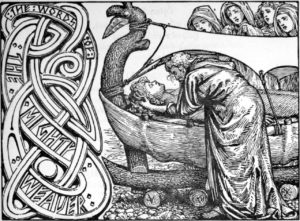 was not throwing things. Loki offered to guide Hodr’s hand so he could throw something. He put the mistletoe into Hodr’s hand. Hodr threw and the dart pierced Baldr’s heart. Baldr fell dead.
was not throwing things. Loki offered to guide Hodr’s hand so he could throw something. He put the mistletoe into Hodr’s hand. Hodr threw and the dart pierced Baldr’s heart. Baldr fell dead. The story of Baldr is the story of the seasons and the natural cycle of life. Our northern ancestors revered the sun and its life-giving heat and warmth. We know the summer solstice was a holy time for northern pagans — especially those who built monuments to the sun during the neolithic age. Baldr is clearly associated with the midsummer sun — the sun at solstice. It is no surprise that his blind brother, Hodr (winter) slays him with the help of Loki (who is a chaos god) which brings about renewal (Ragnarok). Baldr is the renewal of life and all the beauty associated with it. Hodr is the old age and the impending death. Loki (chaos and entropy) brings these changes about.
The story of Baldr is the story of the seasons and the natural cycle of life. Our northern ancestors revered the sun and its life-giving heat and warmth. We know the summer solstice was a holy time for northern pagans — especially those who built monuments to the sun during the neolithic age. Baldr is clearly associated with the midsummer sun — the sun at solstice. It is no surprise that his blind brother, Hodr (winter) slays him with the help of Loki (who is a chaos god) which brings about renewal (Ragnarok). Baldr is the renewal of life and all the beauty associated with it. Hodr is the old age and the impending death. Loki (chaos and entropy) brings these changes about.
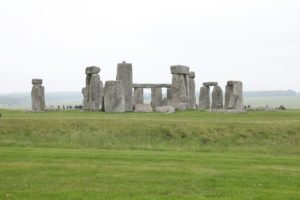 It’s little wonder why the mistletoe is a symbol of the winter solstice, since it is the symbol of Baldr’s death. But the winter solstice is also the symbol of the return of life. We know that the days will grow longer again after December 21st, just as we know the days will start to grow shorter after June 21st. So, this summer solstice, raise a horn or glass of mead to the god of rebirth and renewal. Because we know that Baldr may “die” with the oncoming winter, but he will be reborn once again. (And the Christians thought that they were the only ones with a god who dies and is reborn?)
It’s little wonder why the mistletoe is a symbol of the winter solstice, since it is the symbol of Baldr’s death. But the winter solstice is also the symbol of the return of life. We know that the days will grow longer again after December 21st, just as we know the days will start to grow shorter after June 21st. So, this summer solstice, raise a horn or glass of mead to the god of rebirth and renewal. Because we know that Baldr may “die” with the oncoming winter, but he will be reborn once again. (And the Christians thought that they were the only ones with a god who dies and is reborn?)